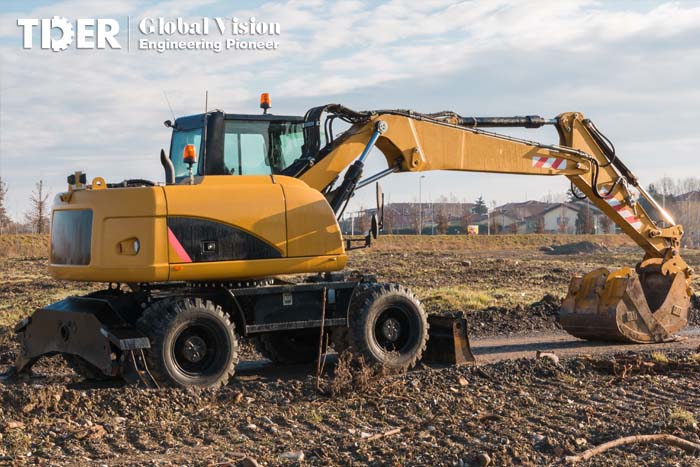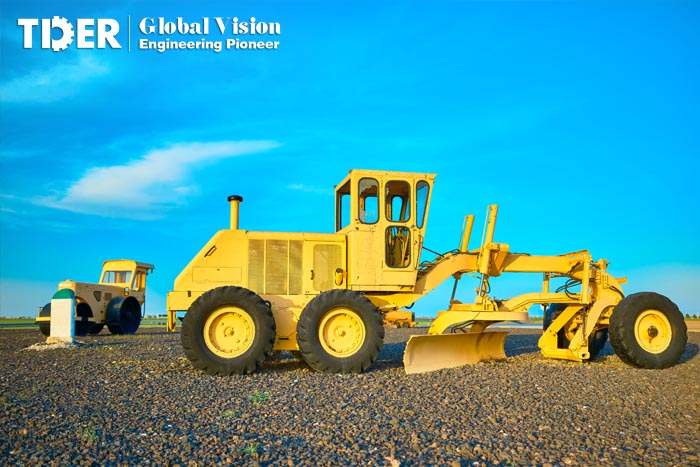Service Hotline:86-0592-5681408 / 86-17346269651
As global infrastructure construction continues to advance, the application of construction equipment has extended beyond closed job sites to open road environments. In particular, wheel excavator, known for their high mobility and convenient transferability, are increasingly used in municipal engineering, emergency repairs, urban landscaping, and road maintenance. However, for construction equipment to operate legally on public roads, they must meet not only fundamental mechanical requirements but also...
For contractors, equipment operators, and rental companies, understanding the road compliance of wheel excavators and other construction machinery is key to improving operational efficiency and managing costs. This article aims to systematically analyze the roadworthiness and technical requirements of wheel excavators and, through regulatory comparisons and practical advice, help global users better understand compliance pathways.

Ⅰ. Road Operation Capabilities of Wheel Excavators
1. Basic Features
Unlike tracked excavators, wheel excavators are equipped with tires for movement, which makes them more adaptable to roads. They exert less ground pressure, are less damaging to road surfaces, and offer zero-radius turning—ideal for narrow urban areas. Most models are designed to operate at 25–40 km/h, with optional high-speed transmissions enabling short-distance travel on roads. Their suspension and braking systems are specially engineered for safe and flexible operation between city roads and jobsites.
In municipal engineering, wheel excavators are widely used for curb laying, trenching for drainage systems, tree pit preparation, and light foundation excavation—offering high attendance rates and utilization. Their rapid mobility makes them ideal for emergency and rescue operations.
2. Technical Feasibility for On-Road Operation
a. Power System Compliance: Engines must meet local emissions regulations, such as U.S. Tier 4 Final or EU Stage V. This often requires diesel particulate filters (DPF), selective catalytic reduction (SCR), and may involve engine emission test reports or OEM certifications.
b. Noise Restrictions: Per ISO 6393 and ISO 6395 standards, construction equipment must adhere to noise limits, particularly in urban or nighttime settings. Noise reduction devices may be required for wheel excavators used in cities.
c. Road Safety Configuration: Legal road operation requires full lighting systems (headlights, turn signals, brake lights, hazard lights) meeting ECE or DOT standards. Braking systems should be ISO 3450:2011 certified. Rearview mirrors must conform to SAE J1082 standards for blind spot reduction.
d. Size and Weight Limits: Typical regulations limit total vehicle width to 2.55m and height to 4m. Wheel excavators generally fall within these dimensions. Axle loads must meet bridge load-bearing limits; some countries require vehicle weight distribution reports.
3. Comparison of Regional Regulations
a. North America (USA, Canada): DOT compliance is required, with reflective markings, SMV triangle symbols, tail lights, handbrakes, etc. Some states require specific licenses for operators.
b. European Union: Compliance with CE 2006/42/EC Machinery Directive is essential, especially for safety, environmental, and ergonomic standards. Tail lights, horns, and directional indicators are mandatory, often along with electronic stability control.
c. Southeast Asia: Temporary road permits are common, issued by transport or engineering authorities. Equipment must be registered as "special road-use vehicles" with limited hours and prohibited night travel.
d. Australia: Regulated by the Heavy Vehicle National Law (HVNL), which emphasizes axle load distribution and size control. Special road access permits may be required.
e. Latin America (Mexico, Brazil, Chile, Argentina): Must meet safety standards from local transport departments, including reflective markings, brake lights, tail lights, and SMV triangles. Operator licensing is required. Some areas impose further size, weight, or emission limits—exceeding which requires special permits.

Ⅱ. Construction Equipment Types Allowed on Roads
1. Classification
a. Full Road Rights: Graders, tire rollers, and high-speed loaders with full road compliance.
b. Restricted Road Rights: Concrete pump trucks, towed pavers—allowed with temporary permits, limited times/routes.
c. Off-Road Only: Crawler excavator and large crawler cranes—must be transported by trailer.
Key certifications: DOT/ECE lighting, ROPS/FOPS cabin certification, SAE J1378 hydraulic protection.
2. Road-Capable Examples
a. Asphalt pavers, tire rollers with automatic warning brackets or license plate holders
b. Multi-purpose wheel loaders with road tires and high-speed gearing
c. Telescopic handlers meeting ISO 5006 driver visibility standards
3. Retrofit Compliance Options
a. Third-party certifications (e.g. TÜV, Intertek) for safety upgrades
b. OEM kits for lights, reflectors, hydraulic speed limiters
c. Special installations such as ABS, tire pressure monitoring, electronic speed controllers

Ⅲ. Best Practices for Road Operation
1. Preparation
a. Required documents: vehicle registration, road liability insurance, operator license
b. Route planning: height clearance, bridge loads, sharp turns
2. En Route Management
a. Escort convoys: lead and rear vehicles with emergency lights
b. Red flags for daytime, LED strips for nighttime for visibility
3. Emergency Measures
a. Fault handling: warning triangles within 100m front and rear
b. Reporting: notify traffic authorities and submit route change applications if needed
Ⅳ. TDER's Commitment to Global Road Compliance for Wheel Excavators
As high-mobility, multi-functional construction machines, wheel excavators are increasingly in demand worldwide—but also face growing regulatory scrutiny. While regulations vary, safety, efficiency, and environmental protection are universal benchmarks. Contractors and equipment operators must understand their local rules and technical standards to ensure legal, efficient use.
As a leading Chinese exporter of construction machinery, TDER provides wheel excavators that meet international road compliance and offers custom modification solutions tailored to target markets—empowering customers with globally operable equipment.